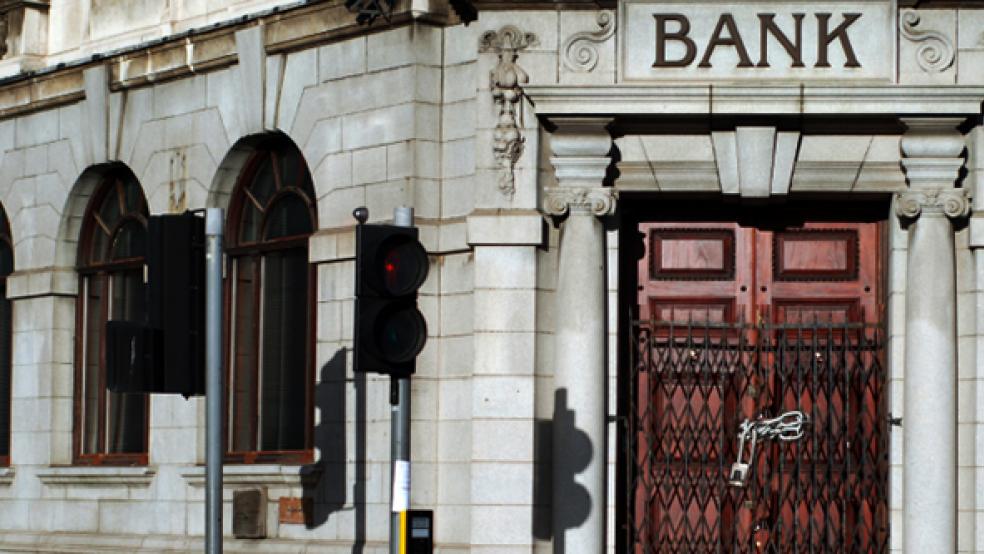For scores of banks loaded down with bad commercial real estate mortgages, the judgement day is upon them. Some $1.4 trillion of commercial mortgages made at the peak of the real estate boom is beginning to come due, and many of the borrowers are expected to default.
Until now, banks with bulging portfolios of underwater loans have resorted to “extend and pretend” tactics to delay the inevitable default as long as possible, with some banks not even certain of the quality of the loans. But banks can no longer avoid the bad news of mounting bad debt that is likely to cause more bank failures and mergers, especially in the small-to-middle end of the industry.
"There's going to be a day of reckoning. We're going to start to differentiate between the winners and the losers," said Ryan Severino, senior economist at real estate information company Reis. "You would think people would have a strong handle on something this important, but it is so opaque that it's sort of unbelievable."
When the crisis first hit, banks were failing because of bad or sub-prime home loans and construction loans, but now they are failing because of these commercial real estate mortgage time bombs. Moreover, fresh signs of weakness in the overall economy could spell new trouble for commercial mortgages, which are loans taken on office buildings, apartment complexes, hotels, retail space and other business properties.
The health of commercial real estate flows through to state and local governments that receive property tax revenue, and citizens who rely on government services and a thriving local business community -- not to mention the banks that hold commercial mortgages.
Deposit Insurance Corp. $24 billion,
up from initial estimates of $22 billion.
Before the 2008 financial crisis that sparked the worst recession in modern times, bank failures were relatively rare, but they surged after the financial meltdown. There were 25 bank failures in 2008, 140 failures in 2009 and 157 failures in 2010, according to the Federal Deposit Insurance Corporation. Less than half way through 2011, there have been 45 bank failures, including the Atlantic Bank and Trust of Charleston, S.C., First Heritage Bank of Snohomish, Wash., First Georgia Banking Company of Franklin, Ga., United Western Bank of Denver and Coastal Bank of Cocoa Beach, Fla.
SNL Financial projects that the cost of bank failures will exceed the amount initially expected by either industry or regulators. For 2010, bank failures will cost the Federal Deposit Insurance Corp. $24 billion, up from initial estimates of $22 billion, according to an SNL analysis of FDIC data.
"The banks are competing heavily for the few good quality loans that are out there," said SNL analyst Maria Tor. Even if bank failures this year dip below the 2010 level, that may not signal improvement in the sector, Tor said, noting that it could instead indicate that a calmer environment gives the FDIC more time to find a willing buyer for a failed bank's assets.
now it's because they're so bad that
you haven’t found a way to pay it
off. It's only going to get worse."
Moreover, analysts see continued distress in the commercial mortgage-backed securities market (CMBS) -- the loans repackaged and sold to investors that were at the epicenter of the financial crisis. Whereas delinquencies in loans owned by banks and thrifts have come down from a peak in the third quarter of 2010, those held by CMBS investors continue to climb.
"The CMBS market has been seeing a continued rise in delinquency rates," said Jamie Woodwell, vice president of commercial/multifamily research for the Mortgage Bankers Association.
Bank failures, of course, are not always a bad thing – especially if their assets are purchased by institutions that can better manage them. Further consolidation in small and middle market banks could lead to more stable, regional banks, said Ben Thypin, director of market analysis at Real Capital Analytics.
Loan servicers have a range of options for working through a troubled loan before it defaults, according to Woodwell. "When you talk to servicers, they will say each loan is different and warrants a fresh look and a different approach," he said.
As evidence of the difficulty in capturing an accurate picture of the commercial real estate market, he pointed out that each of the three major price indexes paints a different story of the market's health. "They're each showing different trends. They also lead one to slightly different conclusions about where we are with regard to prices in commercial real estate," he said.
Of the $3.15 trillion in existing commercial real estate debt, $1.39 trillion is held by commercial banks and $621 billion by securities investors, Severino said. Of the total outstanding commercial mortgage debt, 11 percent is set to mature this year, according to MBA.
"There's a decent amount of loans that are going to mature in 2012 and 2013 that we're going to have to keep an eye on,” said Severino. “What's going to be incredibly important is the quality of the collateral."
Another $322 billion remains outstanding of construction and development loans, a significant percentage of which will be unprofitable since it was hard for any borrower to complete construction and begin operating during the recession. "If you're sitting on C&D loans right now it's because they're so bad that you haven’t found a way to pay it off," Severino said. "It's only going to get worse."
Financial regulators are beginning to insist that banks declare their real estate holdings in more detail, said Jon Southard, principal and director of forecasting for CBRE Econometric Advisors. "Every loan is going to need to be dealt with and the time for that to occur is coming closer," Southard said.
On the plus side, banks are able to handle the pace of new delinquent loans -- just barely. "That said, everyone knows there are more problems coming," he said. "There are still a lot of banks in trouble and some of them will not make it."
Related Links:
The Other Real Estate Crisis--Commercial Property (The Fiscal Times)
Fed May Discourage Big Bank Dividends (The Fiscal Times)





